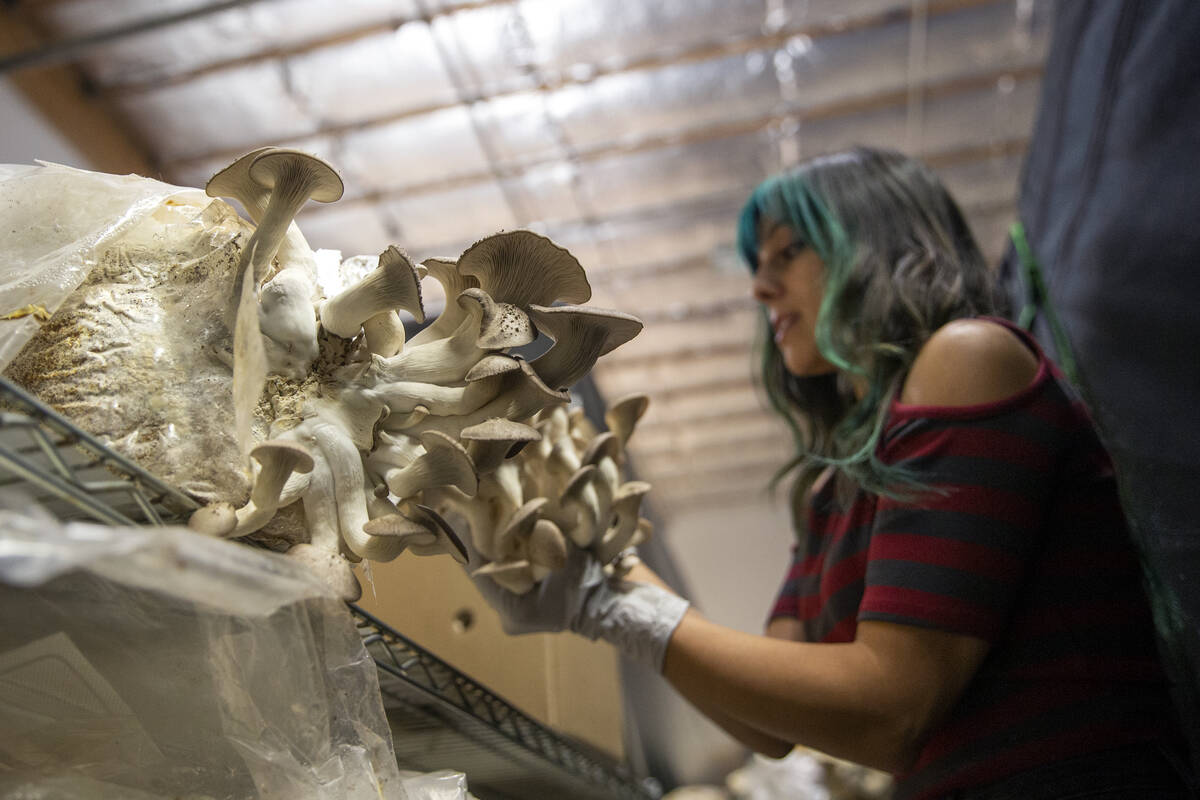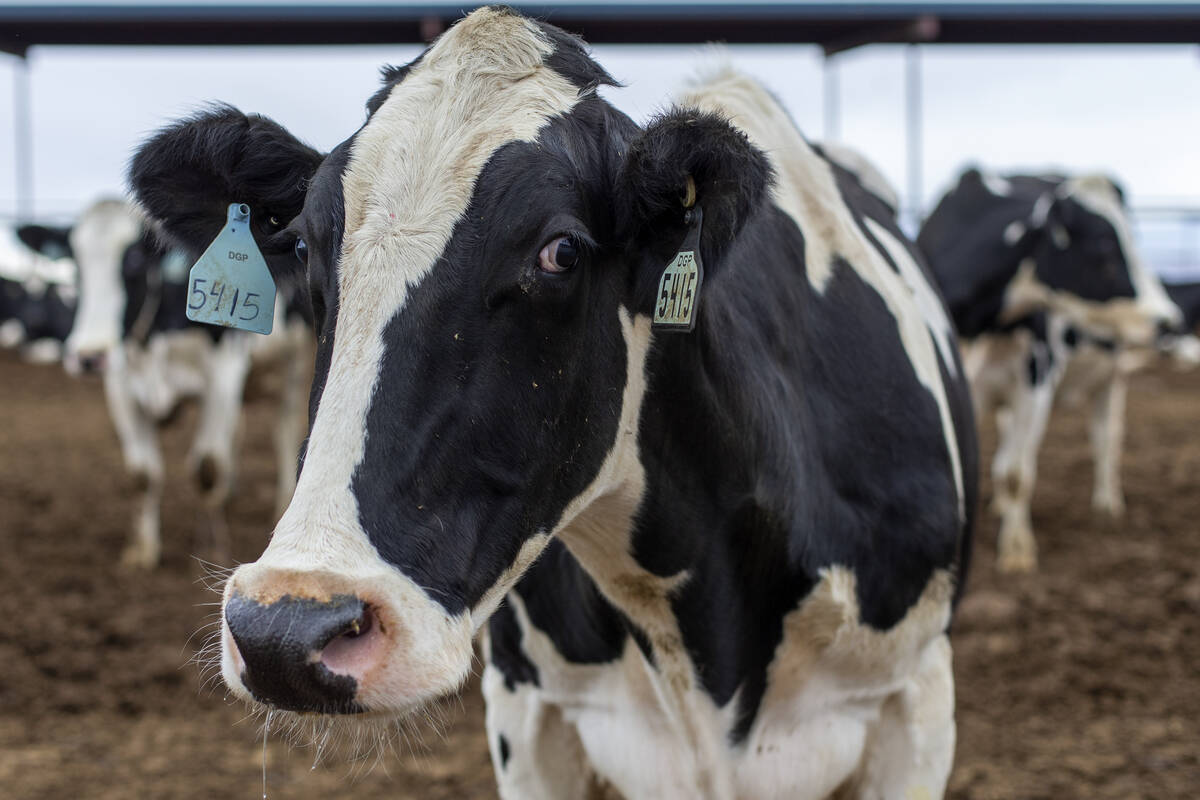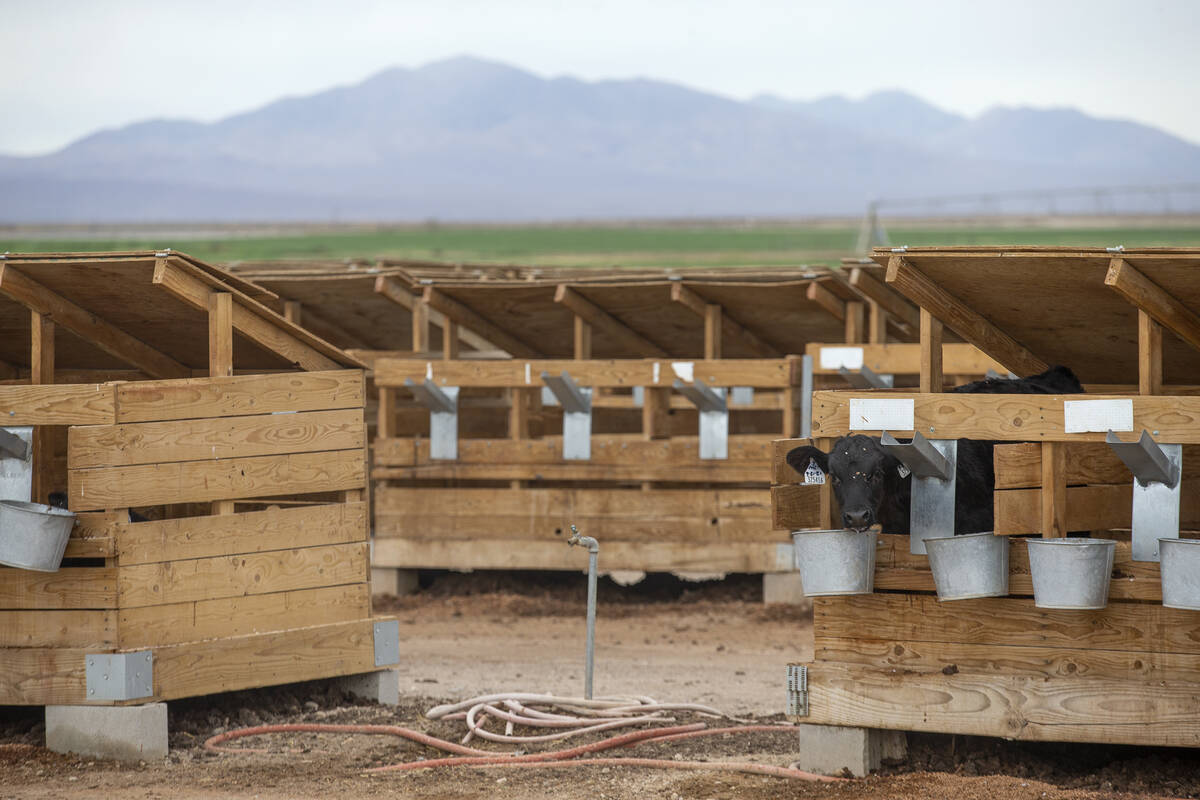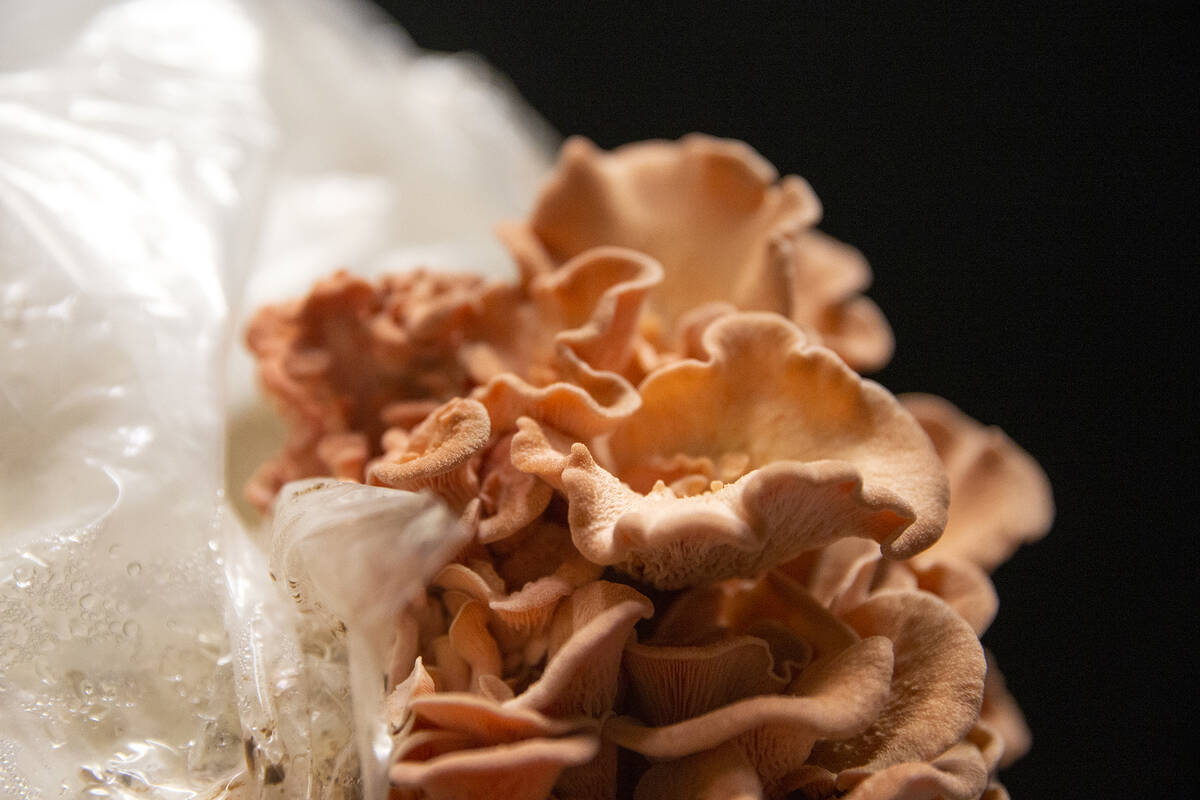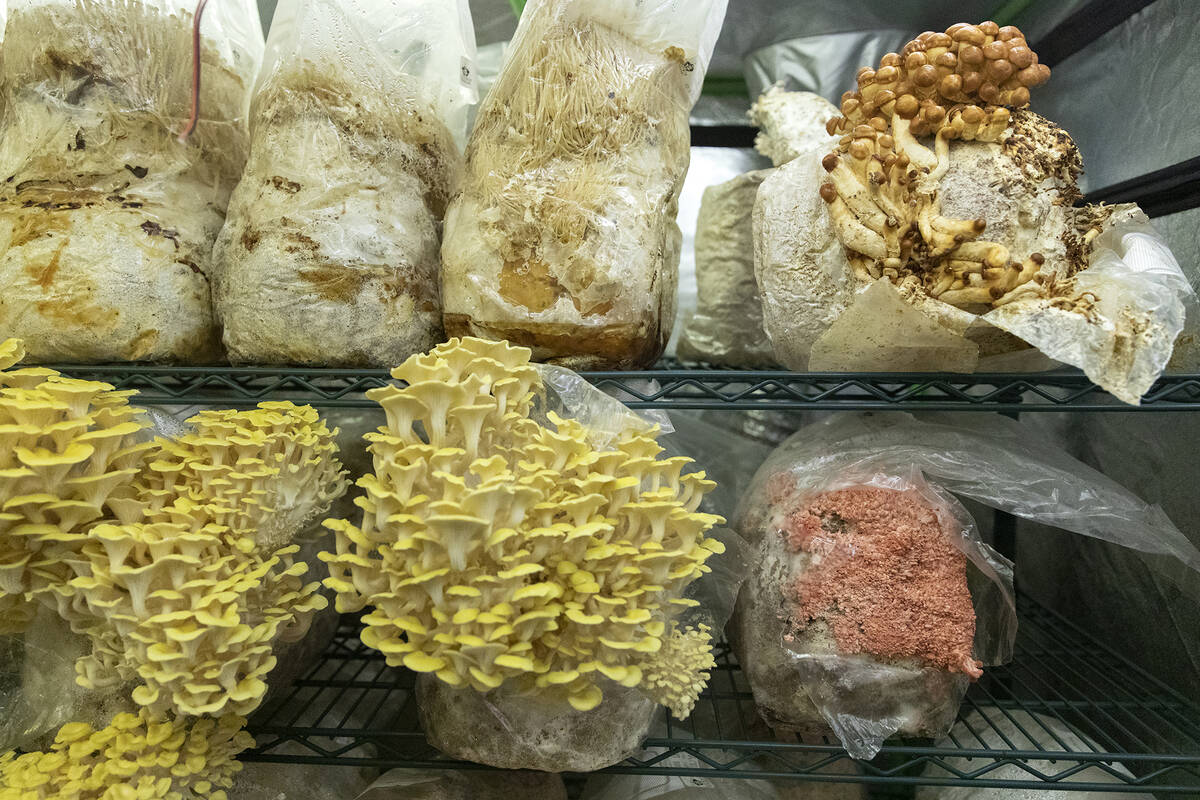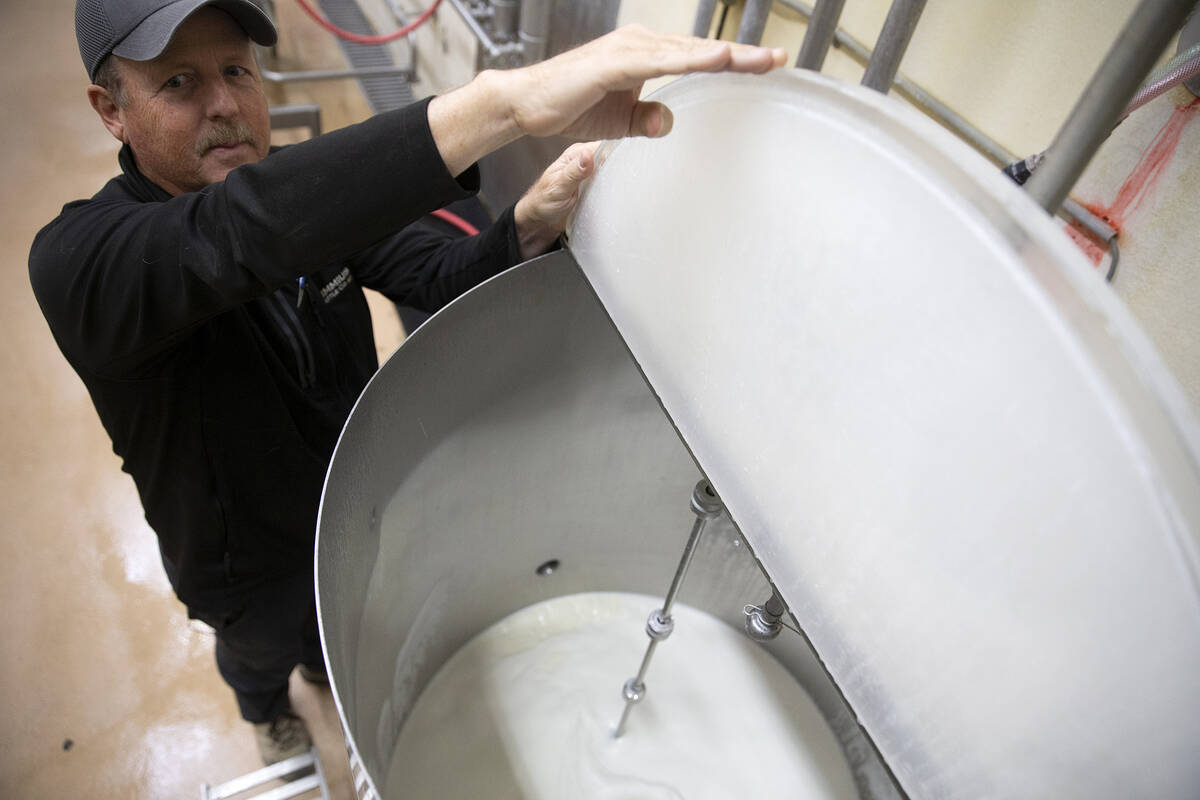Agriculture can be a challenge in Nevada, but it’s still big business
If the rise of the farm-to-table movement has taught us anything it’s that fresher is better, for taste, nutrition and the environment. In a place like Nevada, where much of the terrain is arid, growing — and buying — local products may be more of a challenge than in one of the Midwestern farming states. But, still, it’s big business here.
“A lot of people don’t realize how diverse Nevada agriculture is,” said Ashley Jeppson, administrator of the division of plant health and compliance of the Nevada Department of Agriculture. The state’s major crops? Onions and garlic, Jeppson said, mostly grown around Yerington, Gardnerville and Minden. Of course, cattle is fairly big, she added. “And pistachios in Southern Nevada. Some small farms that just grow an array of produce. Most of the folks we work with are family farms, so they’re relatively small.”
In 2020, according to state figures, Nevada ranching and farming accounted for $787.8 million in economic output, in addition to $3.925 billion in food and beverage manufacturing. In 2019, the state exported $320 million worth of food and agricultural products to Asia, Central America, South America, the Middle East and other parts of North America.
Much of Nevada’s agricultural production is clustered in the north, where a more temperate climate than that of Southern Nevada is better for growing. While 31 percent of Pershing County’s $679 million total economic output comes from the food and agriculture sector, it represents only 1.2 percent of Clark County’s $198.8 billion total output. Of the approximately 3,350 farms in Nevada — a number the state says has been pretty stable for three decades — just 179 are in Clark County.
But while they may not be as visible as in states where farms still occupy sweeping vistas, these operations yield products that show up in restaurants, at farmers markets and supermarkets and in school cafeterias. Those who use them say there’s a reason to be grateful for that.
“You’re going to get a fresher product,” said Shaun O’Neale, executive chef of Larrea at the Panorama Towers. “And when you can talk to the person that’s growing that product, you kind of know the whole life of it, whether it be wagyu or some little microgreens.”
O’Neale said he’d recently discovered Brough Ranch, which produces wagyu beef in Wells, Nevada. “They only butcher five cattle a month,” he said. Still, he’s committed both to using Brough’s meat and to helping the company grow; “probably two to three weeks out of the month, we’ll always have their ground beef.”
O’Neale said he likes building a relationship with a producer.
“You can ask the vendor, hey, what’s the marbling like?” he said. “What have they been eating this month? In Wells, it gets a little colder, so they’re going to be packing on a little fat. The meat’s going to be changing throughout the year. If I was buying from one of these big suppliers, the meat’s always the same.”
Use as much local as possible
Sterling Buckley, executive chef of Honey Salt, said he also likes being able to build relationships with suppliers — something he wasn’t able to do on the Strip.
“Things get dropped off at the loading dock” at the big resorts, Buckley said. “It’s nice to be off the Strip and have a relationship with the farmers. It definitely makes it fun, and more exciting for our menus. We’re very seasonal here at Honey Salt.”
O’Neale and Buckley say they use as much locally produced food as they can, but getting it can sometimes be a challenge — a sentiment echoed by Nicole Brisson, executive chef/partner at Brezza and Bar Zazu at Resorts World and a pioneer and leader in the local farm-to-table movement.
“I feel like I’ve been saying the same thing for the last 15 years,” Brisson said. “The great thing about being in the desert is there’s these little oases, like Pahrump, Sandy Valley. It’s a little bit of a struggle. I’ve used a number of small farms over the years. It’s always evolving, because some make it, some don’t.”
Some don’t really plan to make it big, but succeed anyway. One of the suppliers Brisson and O’Neale use is Herbs by Diane in Boulder City. Owner Diane Greene said she started her business very slowly, first at the Boulder City farmers market and then other farmers markets, such as one put together by former University of Nevada Cooperative Extension agent Bob Morris and local chef Doug Taylor, who then worked for Brisson at B&B Hospitality Group. Greene said that was when she knew she was part of the state’s agricultural industry.
“It was only us locals, plus the anchor farm” importing produce that can’t be grown here. “We had local pistachio growers from Pahrump. It was all locals. All the chefs were there. That’s where I met a lot of my contacts.”
Greene said she regularly supplies clients, including Brisson, with a list of what she’s expecting to have.
“They tell me what they want,” she said, “but ultimately it ends up what I have, what I can do. Like a lot of them right now want petite red-veined sorrel. It takes forever to grow it.”
Greene said she’s switched over to greens, including the sorrel, for the season, currently offering arugula, beet greens, dandelion greens, Swiss chard, red Russian kale and New Zealand spinach. “Some chefs have asked for Petite Gem, the whole head,” she said. “Some chefs want orchids; you can’t do that in the middle of the desert. But we can do tons of things.”
Including mushrooms, which have a unique quality that can actually necessitate a local producer. O’Neale and Buckley said they both use those produced by Las Vegas-based Desert Moon Mushrooms. Some of the mushrooms are so delicate they couldn’t be shipped under any circumstances, said Desert Moon co-owner Enrique Gonzalez, whose products are sold in farmers markets as well as restaurants. Desert Moon has been in business only a few years but already has outgrown its 1,100-square-foot warehouse.
10 varities
Gonzalez said they grow and sell 10 varieties. “There seems to be a large misunderstanding about mushrooms,” he said. “Only one (variety) is available in most grocery stores. There are dozens, and they all have different textures and flavors. It’s fun to try new varieties and introduce them to people.”
“Right now we’re growing a really cool one called coral tooth,” said co-owner EvaSara Luna. “It’s a very sweet mushroom. The texture is really interesting. Because it looks like coral, when you cook it, it has more of a stringy texture. People like to deep-fry it, like a tempura. It’s really fun to play with.”
“That one’s super-delicate,” Gonzalez said. “You would never be able to ship it. People are always so excited to see that mushrooms are grown locally. And when they see other small farms, they say, ‘Wow, I didn’t know this could grow in Las Vegas.’”
And a big reason that it can is the University of Nevada Cooperative Extension’s Research Center & Demonstration Orchard in the northern part of Las Vegas.
“UNR has done so much research on things that can sustain desert temperatures,” Brisson said.
“People become disappointed because they think we can’t grow anything there, and that’s not true,” said M.L. Robinson, the center’s program leader. Robinson said they’ve been working on several projects over the past few years.
Hops growing being tested
“One that is still going on is the hops program,” he said. “We’ve been looking at what hops will grow in the desert, and how they will grow. In a hoop house or shade house with 30-percent shade, they do better than in the sun.”
“We also did an experiment with tomatoes,” he said. “My colleague, Angela O’Callaghan, led that for two years. And then we have probably 600 or 700 fruit trees — apples and pears. People don’t realize how well grapes, especially wine grapes, do here. We have over 200 wine grapes and some table grapes.”
Some of the wine grapes have been used by Sanders Family Winery in Pahrump, and some of the hops have been used by local brewers. “But, again, you have to buy the right ones, from the right part of the world,” he said.
(For more information on center programs, go to extension.unr.edu.)
Gilcrease Orchard dates to 1920
Near the research center and demonstration orchard is Gilcrease Orchard, a 60-acre oasis that serves as an introduction to Southern Nevada agriculture for many people. It began as a farm dating to 1920. The family eventually worked 1,500 acres, and Ted Gilcrease said in a 2002 interview that their hens once supplied half of Las Vegas’ egg supply.
Ted Gilcrease and his brother, Bill, eventually established the nonprofit Gilcrease Orchard Foundation. The orchard, under the direction of Mark Ruben, today is a site for school tours, Christmas wagon rides, pumpkin-picking and a wide variety of you-pick produce, which varies by the season but can include pears, tomatoes, carrots, apricots, summer squash, zucchini, beets and peas. And apples, which are used to make the orchard’s locally popular apple cider (and apple-cider doughnuts).
Nevada products that include the orchard’s cider are used in food manufacturing, including the ice pops produced by The Joy Pop Co. and available through thejoypopco.com, Freed’s Bakery, the Discovery Children’s Museum, Hummus Bowls and Beer Park, as well as farmers markets during warmer months.
“We usually do about one pop a season that has something from Gilcrease Orchard,” said co-owner Brian Younglove.
They get their dairy products from Sand Hill Dairy in Fallon, coffee from local roasters and herbs from Herbs by Diane. “I love the idea of supporting other local families,” said Kayla Younglove.
93K gallons of milk a day
While the Youngloves source their dairy products in Northern Nevada, there’s still a dairy in these parts. If you’re buying Meadowgold Milk, there’s a chance it was produced by the Ponderosa Dairy in Amargosa Valley. Manager Ed Goedhart said the dairy has 10,000 cows that are milked twice a day, every day. Together they yeild about 93,000 gallons daily.
Goedhart said Ponderosa’s responsible for about a third of the milk produced in Nevada, shipping 150 tanker loads a week to the processing plant near the Las Vegas Speedway. They produce conventional, organic and A2 milk; the organic milk is sold under the Trader Joe’s label.
Goedhart said they’re one of the few producers in the country of A2 milk, which can be consumed by people allergic to one of the milk proteins.
“We do genetic testing and separate the herd,” he said. “A lot of people who think they’re allergic to cow’s milk and lactose-intolerant are just allergic to the milk protein.”
Goedhart said there used to be several dairies in Southern Nevada, but they’re the last one left. “All the rest have found it economically unviable to do business in Southern Nevada,” he said.
“It’s interesting to tell our guests how hard our farmers work to have these things for our restaurants,” Buckley said.
“We’re definitely trying our hardest,” O’Neale said. “Our focus is going to be as local as possible. Nothing’s going to be easy, and we’re not going to be able to do everything.”




